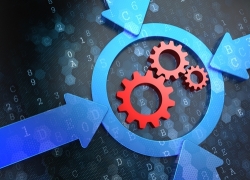Top 3 reasons to deploy next-gen intelligent PDUs
Top 3 reasons to deploy next-gen intelligent PDUs

The data center's many intricate, interconnected components have always been difficult to manage. However, four key trends are introducing new challenges that, if properly dealt with, can also act as opportunities. They are:
- Higher power densities, and therefore the need for better power provisioning.
- An increased necessity for strong capacity planning to improve scalability and flexibility.
- Greater focus on energy efficiency.
- Automation becoming more mainstream in the years ahead.
For these challenges to be transformed into return on investment, data center managers need to leverage facility infrastructure that can enable better operations. The best place to start in that endeavor is with improving power distribution management. Here are three ways intelligent power distribution units (PDUs) can do just that:
1. Remote-control switching
More data centers than in any previous time are operating at high power densities (8 kW to 16kW or more). This is a positive development, since it's the result of more energy-efficient servers that enable better utilization of space. That said, this puts pressure on management to adequately provision electricity throughout the facility 24/7/365. Greater power load increases the chance of surges, and conversely, shorts, either of which can result in unplanned downtime.
To address this challenge without curbing power loads, data center managers require a way to remotely manage electronics, preferably as granularly as at the PDU outlet level. With switched, intelligent PDUs, this is possible. Because they're directly integrated with the network, switched PDUs let authorized staff power cycle frozen devices from nearly any location. (If, for instance, a critical server locks up, it can be remotely restarted by deactivating the outlet it's connected to.) From a power load perspective, management can also cut power being delivered to devices that are not in use, or are consuming an inordinate amount of electricity.
2. Real-time power monitoring
"Enable power usage tracking at the receptacle level."
Of course, for remote switching to be truly effective as a power management tool, you'll need real-time power monitoring. This will be critical to overseeing current, voltage, ampage and other key power metrics indicative of power distribution health. The moment a threshold is exceeded, authorized staff can receive alerts informing them as much. With remote switching, they can deactivate certain electronics if, for instance, the PDU runs the risk of shorting.
Equally important, especially to cloud and colocation providers, real-time power metrics can be analyzed as part of a capacity planning strategy. Intermittent or irregular power usage sampling isn't an accurate enough methodology to be used for forecasting future needs. To scale effectively, data center managers must have accurate averages for total power consumption throughout the entire facility. And, just as intelligent PDUs allow management to control each individual power outlet remotely, they also enable power usage tracking at the receptacle level.

3. Environmental monitoring
Remote monitoring at the PDU level is hardly limited to power usage. In fact, one of the key drivers of growth for the rack PDU market in 2016 was a demand for environmental monitoring. You may be wondering what rack PDUs have to do with remote environmental monitoring, and the answer is everything.
Intelligent rack PDUs come with ports that can be retrofitted with any number of environmental sensors. In other words, the same power strip that is used to distribute electricity and monitor current in real time can also be used to track temperature, airflow, humidity, dew point and other environmental conditions. This has several key benefits:
- Authorized staff can be alerted the moment environmental thresholds in and around the rack are exceeded.
- Real-time data collection enhances both the accuracy and precision of capacity planning.
These benefits, paired with with power monitoring and remote switching, simplify management of high-density data centers, foster improved scalability and create new opportunities for energy efficient operations.
And as a final bonus, they reduce the chances of getting blindsided by costly unplanned downtime.



